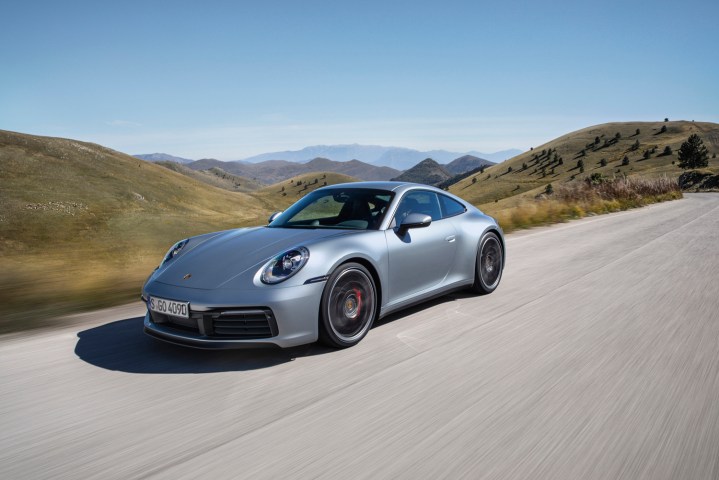
It’s been years since we first heard of Porsche’s on-again, off-again 911 hybrid project. We haven’t seen it yet, but it’s closer than ever. The all-new, eighth-generation 911 (pictured above) introduced during the 2018 Los Angeles Auto Show was developed with electrification in mind from the get-go.
“It will be the next evolution of this car, that means at least four years from today,” confirmed August Achleitner, the outgoing director of the 911 model line, in an interview with British magazine Auto Express. The four-year time frame he provided pegs the car’s unveiling by 2022 at the earliest.
While incorporating an extra battery into any vehicle inevitably adds weight, Porsche has shown it can offset the added mass by boosting performance. The sold-out 918 Spyder and the Panamera Turbo S E-Hybrid are two good examples of what the German firm can do in spite of having to package a bulky battery pack into a sports car chassis. But the 918 was an expensive, limited-edition car and the Panamera gets away with its mass because it’s a family sedan, not a coupe. Electrifying the 911 presents unique challenges that engineers haven’t solved yet.
What remains to be seen is whether there’s a demand for a hybrid model, and how adding a plug will affect the image of what is unquestionably the most emblematic sports car in the world. Porsche doesn’t seem worried about the public’s perception. Achleitner said the hybrid powertrain will be developed with performance, not efficiency, in mind. Don’t expect Porsche to create a Prius.
“When I am thinking about a hybrid version of the 911, I do not mean like the Panamera or Cayenne — I mean like the 919 Le Mans car,” he explained. He declined to provide details about whether it will be a plug-in hybrid, a standard hybrid, or a mild hybrid. Some sources claim Porsche will offer two variants. One will be positioned as an alternative to the standard 911 Carrera, while the other will sit at the top of the range alongside the Turbo model.
Like it or not, the 911 will ultimately need to adopt one form of electrification or another. That’s because Porsche is part of the Volkswagen Group, and company boss Matthias Müller announced bold plans to offer an electrified variant of every single model in the group’s lineup by the year 2030. That gives engineers at Porsche’s headquarters a little over a decade to figure out how to complement the flat-six with volts.
Updated December 3, 2018: Added Achleitner’s comments from the Los Angeles Auto Show.
Editors' Recommendations
- Porsche’s most powerful production car is an EV
- ‘The cars are the stars.’ How automakers are electrifying the racetrack
- 2022 Toyota Tundra hybrid first drive review: New dog, old tricks
- Lamborghini brings back a legendary supercar as an 803-hp hybrid
- Mercedes-AMG shifting gears with a variety of hybrids and EVs on their way




